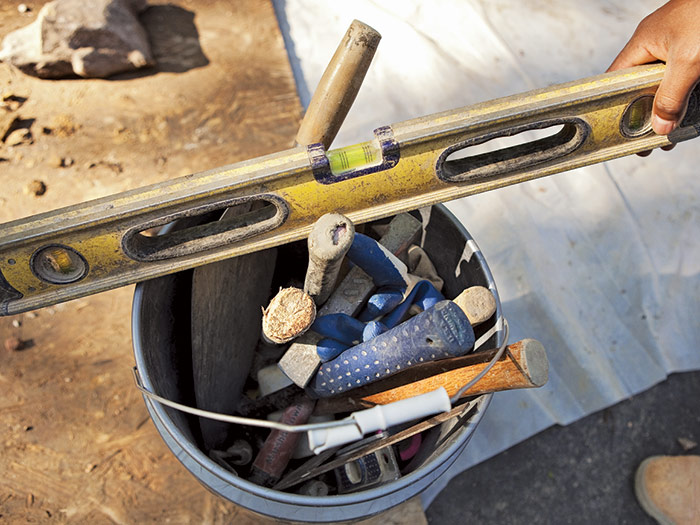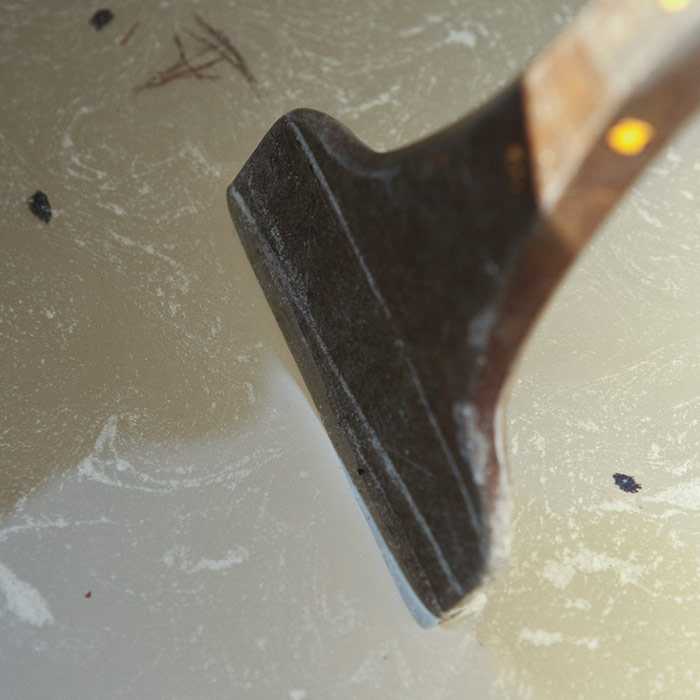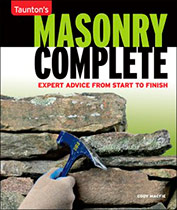Masonry Shaping Tools
Hammers and chisels are essential for fitting stones, bricks, and concrete blocks. Here are common styles of these tools and tips for using them.

Ever look at a stone wall and wonder how those stones were shaped to stack perfectly? The simple answer is that each stone was crafted with a hammer and chisel, the most important tools in masonry. You need them for a lot of jobs: to make stones smaller, shape squares, create corners, break stones in half, and make flat and curved faces. Aesthetically, these tools are essential to making your stonework look good. Structurally, they will help you shape stones correctly to create a strong project. With a little practice, in a short time you’ll be able to use a hammer and chisel to shape any stone.
Hammers
Hammers for stonework include a brick hammer for refining the edges of stones, a rock hammer for shaping rocks, and a sledgehammer for breaking large rocks. Brick hammers get the most work on my crews and are used for light shaping and edge work, which is what they are designed for. However, a skilled mason will often use brick hammers to score cut lines, pry joints, set fasteners, secure twine, and set stones in mortar. Brick hammers are available in different weights, but I prefer 22-oz. hammers because they are light enough to use for long periods and heavy enough to shape stones effectively.

Ten Common Uses for a Brick HammerA brick hammer’s versatility makes it a valuable tool on a job. Here are a few of its most common uses. 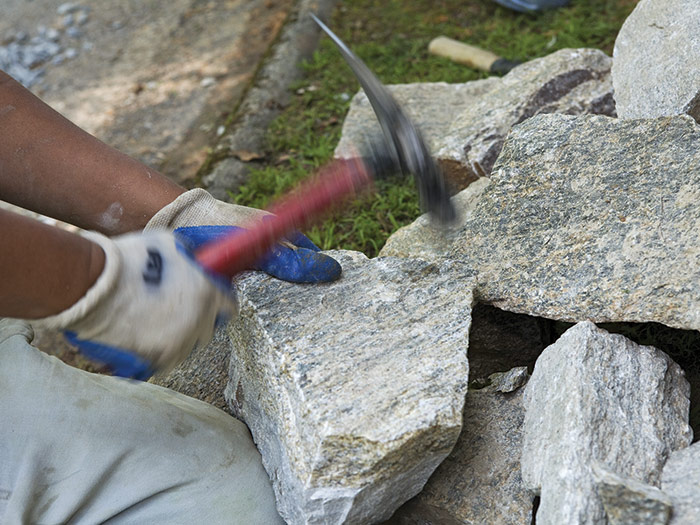
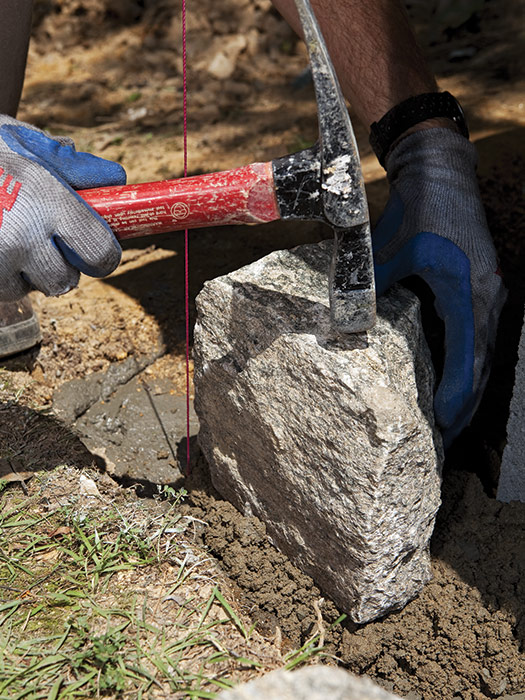
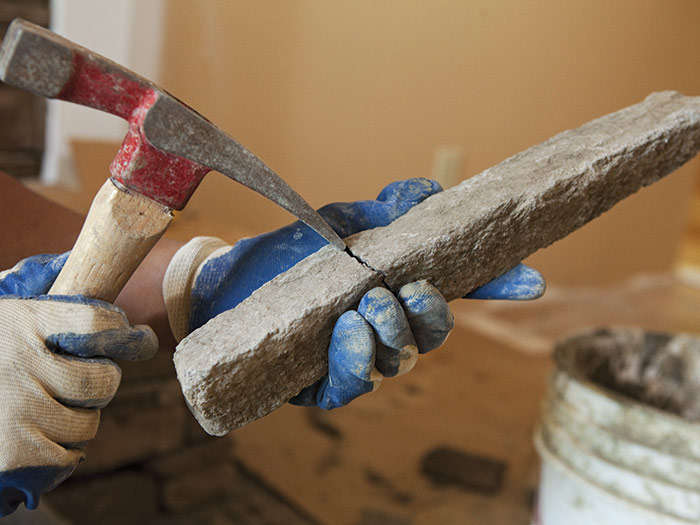
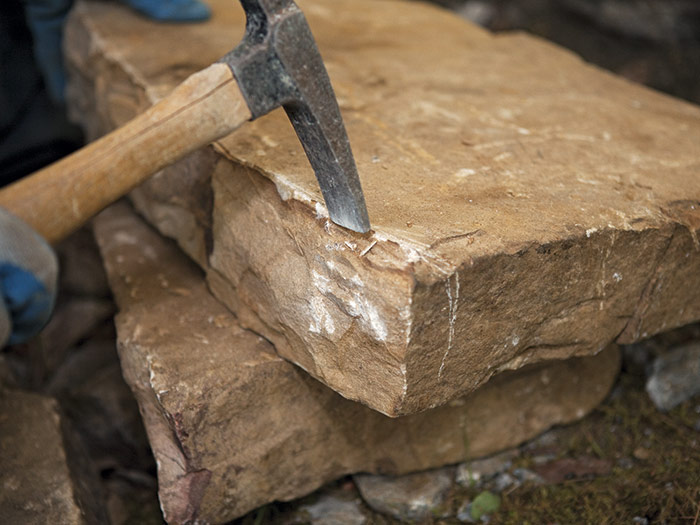
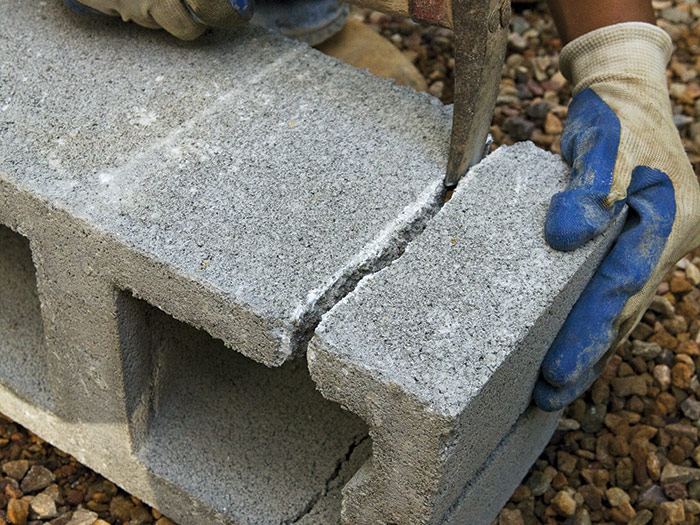
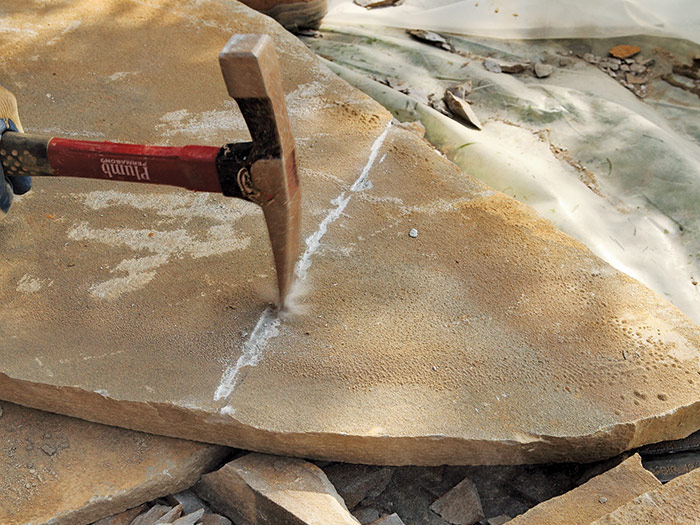
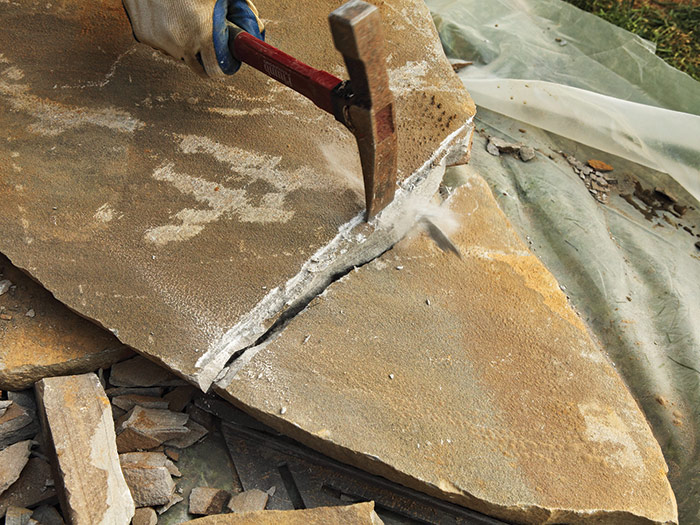
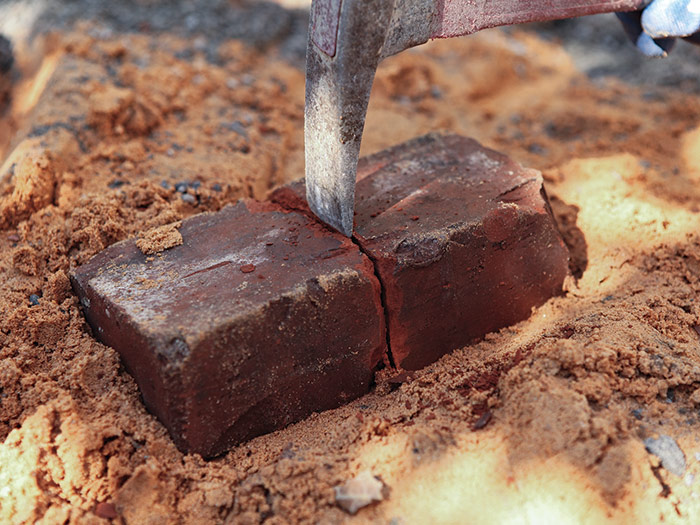
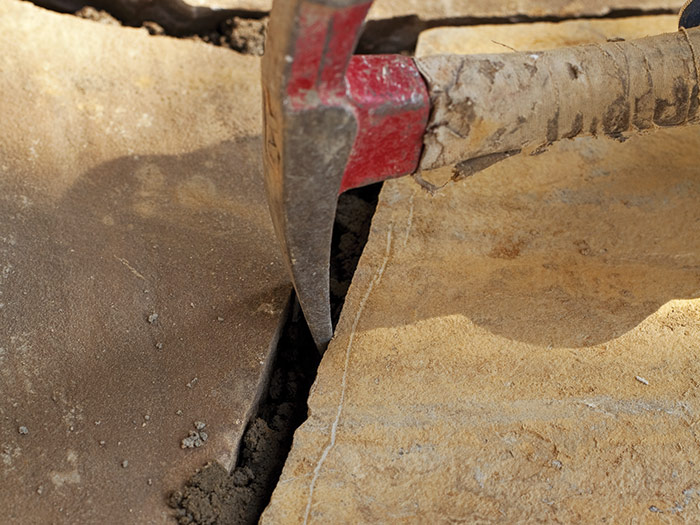
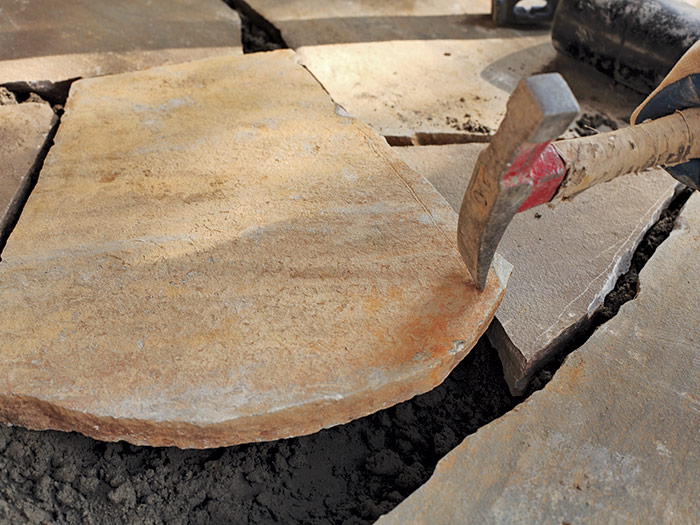 |
Rock hammers and sledges are primarily used to break rocks. A heavier sledge, with a 12-lb. head, will make short work of breaking large fieldstones into smaller pieces. Smaller sledges of 3 lb. or 4 lb., when used with chisels, are great for shaping bulky stones.
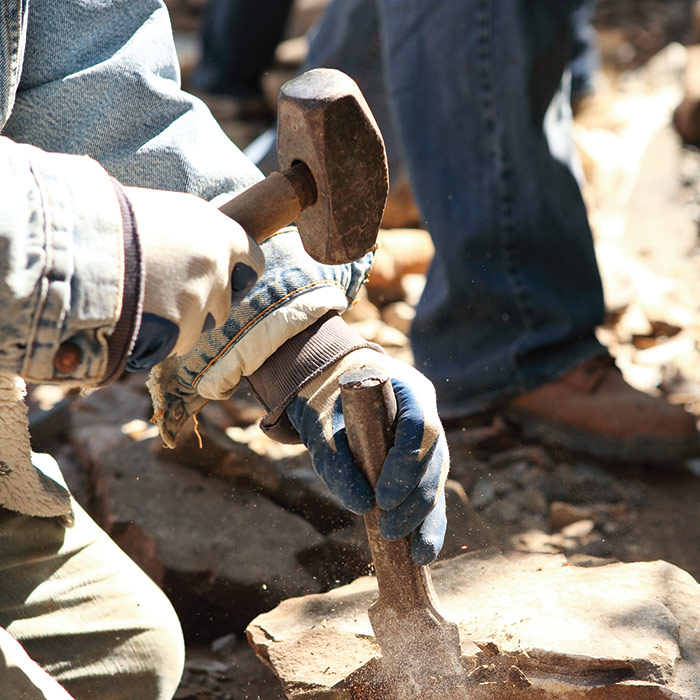
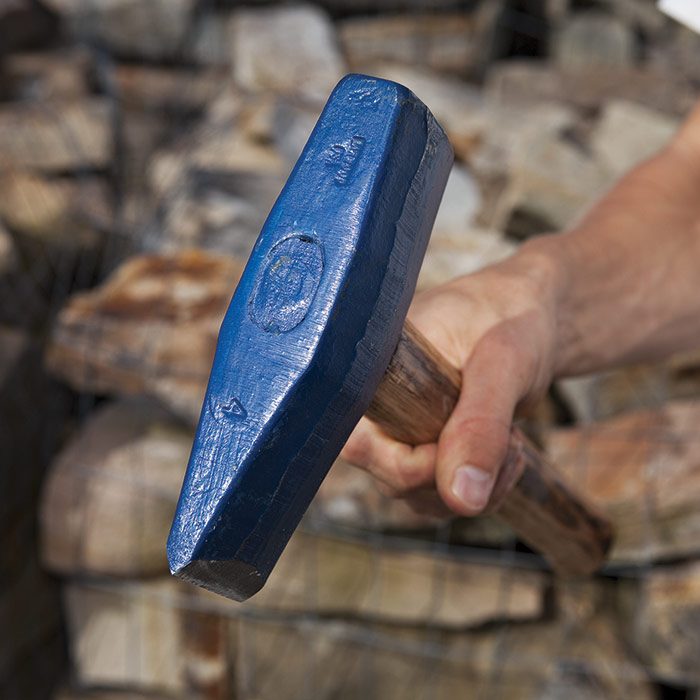
| TRADE SECRET — Never use a claw hammer for stonework. Keep it handy, though, for fastening wall ties, lath, and flashing, or for small carpentry tasks that often arise, such as building forms and braces. |
Chisels
Chisels are used for scoring, edging, refining, and breaking brick, rock, and block. Stonemason’s chisels are heavy-duty with a thick shank and broad head. The better ones have replaceable carbide tips that hold an edge longer.
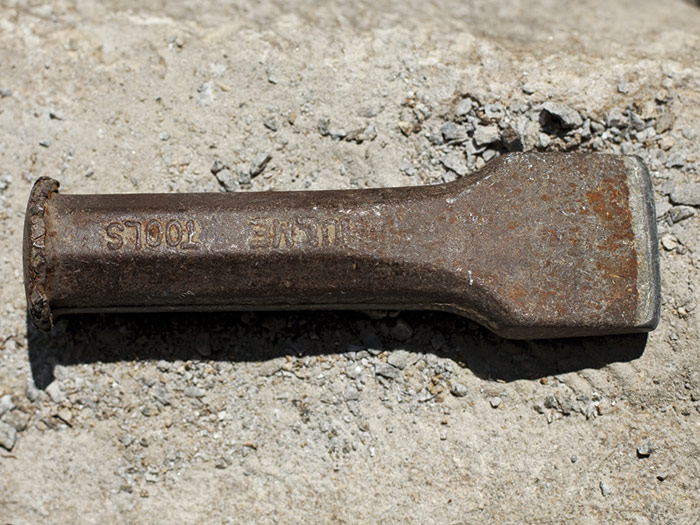
Chisels are sold as either handset chisels or hand-tracer chisels. The former has a thicker edge and is used to break off larger pieces of stone. The latter has a sharper tip and is used to remove smaller pieces of stone or to split a stone along a straight line.
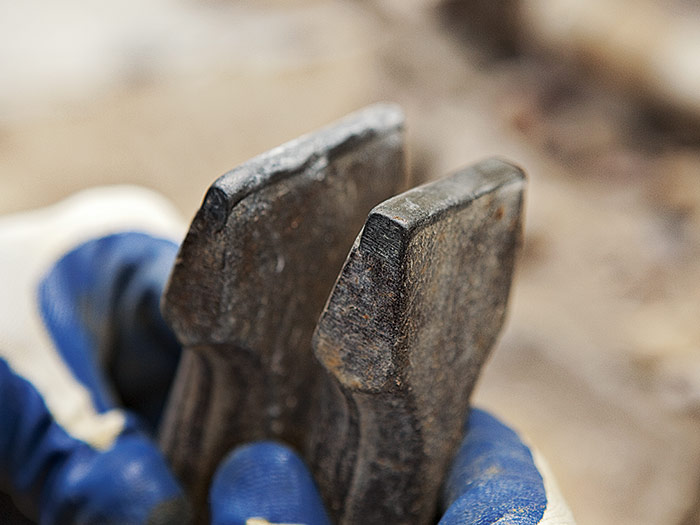

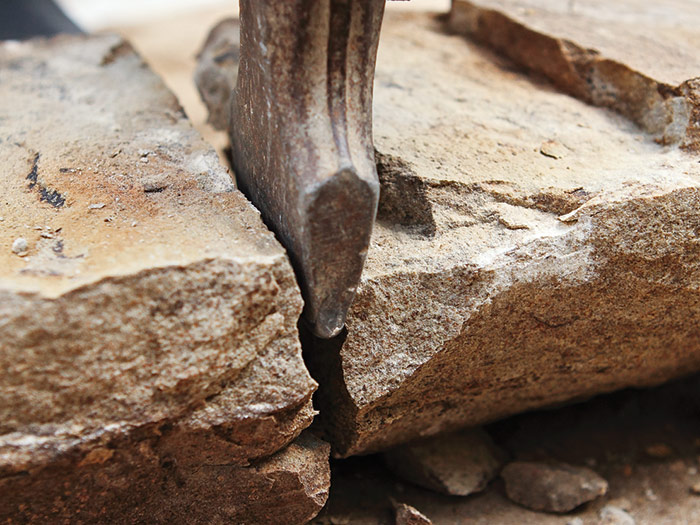
Cold chisels and brick chisels are used for scoring brick and block. They do not have carbide tips and will not last nearly as long as a carbide-tipped chisel. However, they can be found at most home improvement stores and are generally less expensive. A cold chisel is a chisel made of tempered steel. Both carbide and cold chisels can be sharpened on the job site.
Make a Clean Break Using Chisel and Sledge
Place the chisel at the beginning of the cut, angled at about 30 degrees. 1. Then strike the chisel medium hard (less than all you’ve got but hard enough to make the stone take notice). Hit the stone only once. Move the chisel forward along the break line, reverse the angle, and strike the chisel, again, medium hard 2. Proceed across the stone, reversing the chisel angle each time. When you reach the other side, start back across the stone along the same break line 3. Keep doing this until the stone breaks 4. It may take a few minutes; be patient, and you’ll be rewarded with a clean cut.
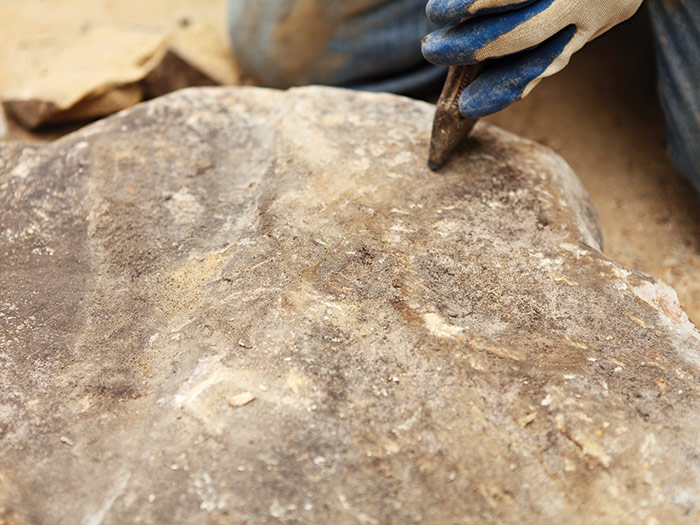
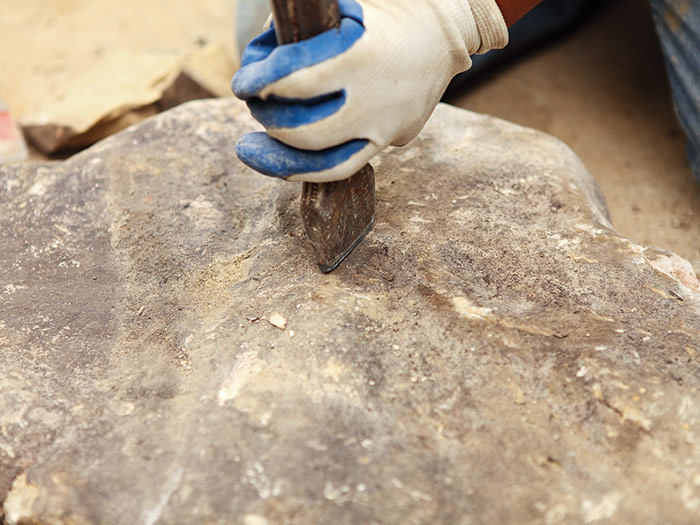
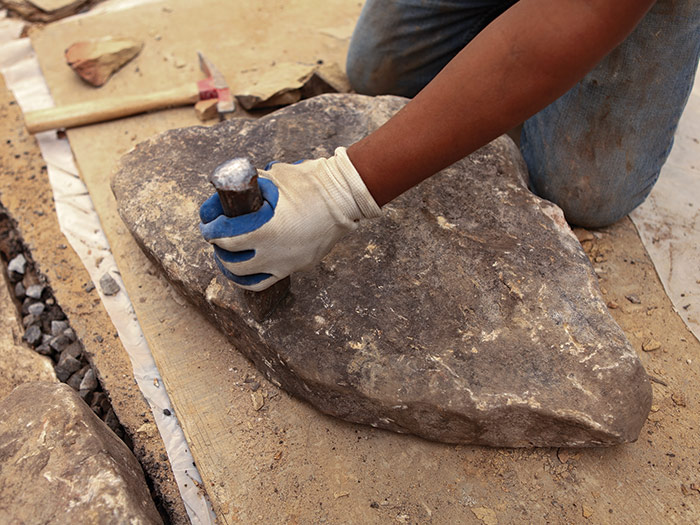
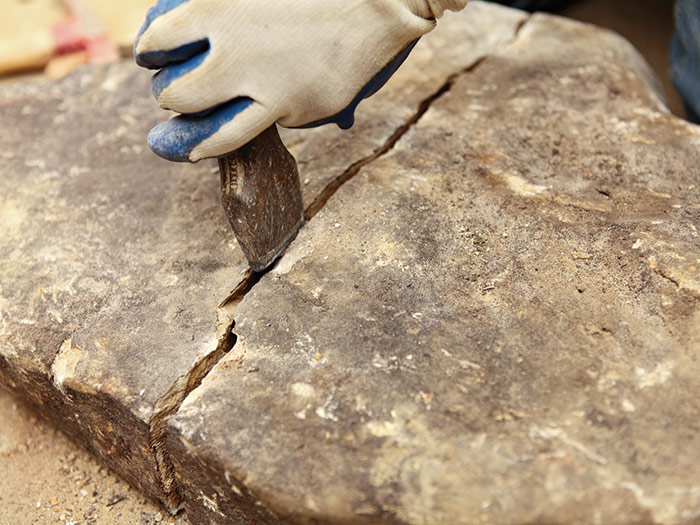
Dress a Corner Stone with Hammer and Chisel
To dress a flagstone corner for a patio, find a piece of stone that looks like a natural corner stone with an angle close to 90 degrees 1. Use a framing square to mark a 90-degree angle on the edge with a pencil. Next, use a handset chisel and small sledgehammer to remove small sections along the line 2. Break off small pieces, working away from the edge 3.
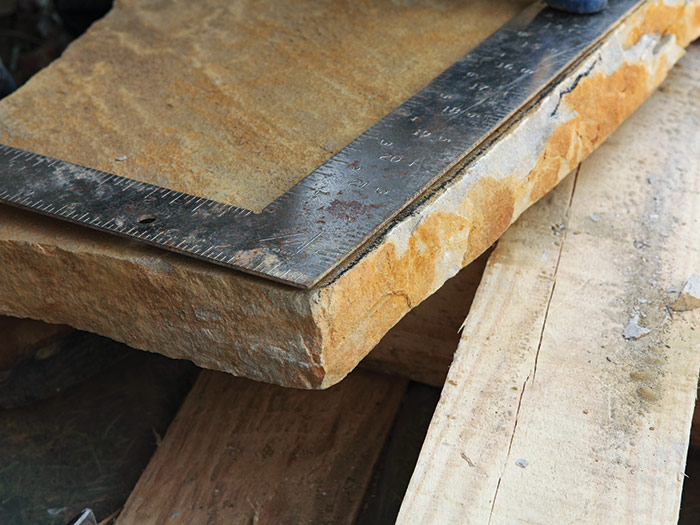
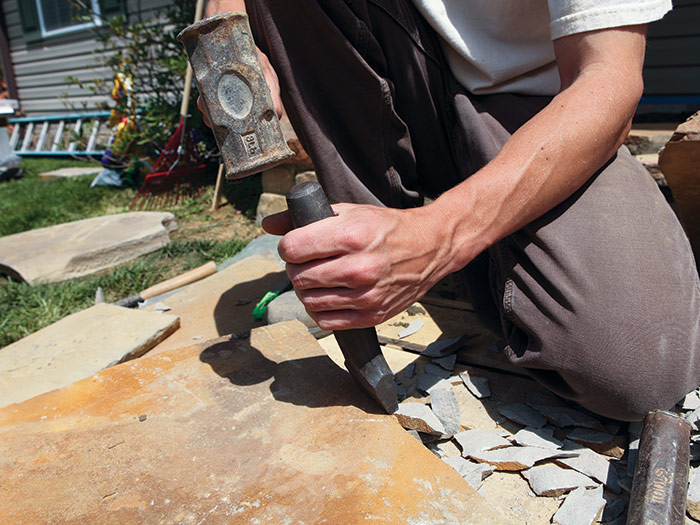
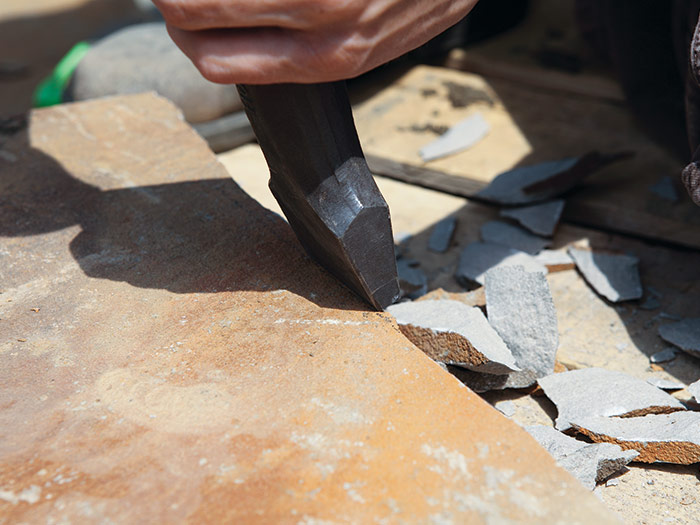
Sharpening Tools on the JobBrick hammers, cold chisels, and carbide-tipped chisels can be sharpened on the job site with a portable angle grinder. Using a fine-grit wheel, gently pass the grinder across the tool’s cutting surface. Try to match the existing bevel on the blade and avoid being too aggressive with the grinder. Keep a bucket of water handy to cool the steel often (photo at right below). You don’t want the edge to get hot and lose its temper (ability to keep an edge).
|
Excerpted from Masonry Complete (The Taunton Press, 2012) by Cody Macfie
Available at Amazon.com.

